




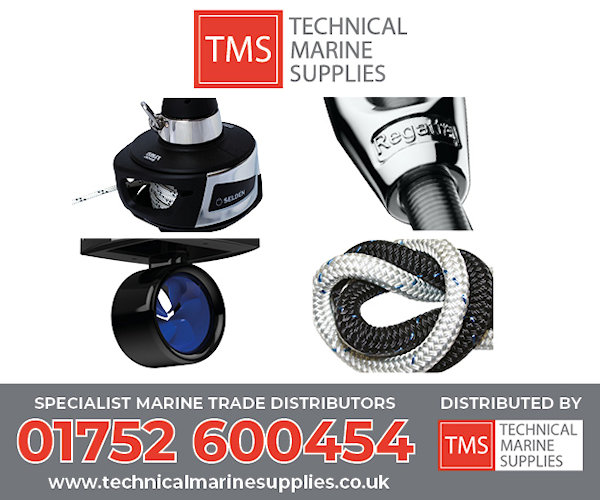
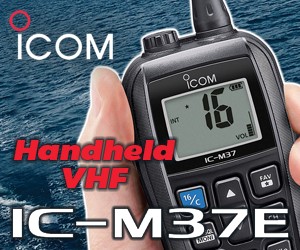

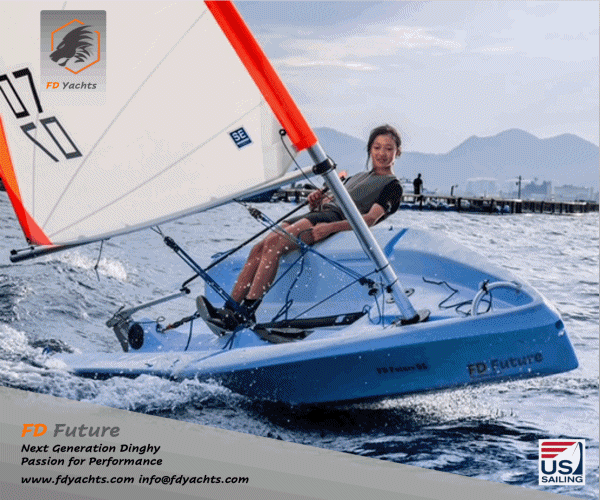
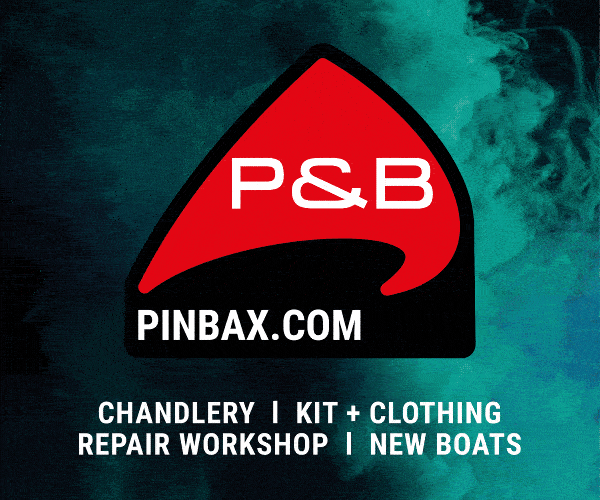



Boats for sale
| Laser 28 - Excellent example of this great design Hamble le rice |
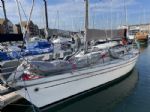 |
| Laser 140101 Tynemouth |
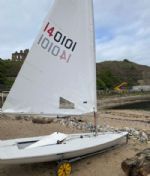 |
| Rossiter Pintail Mortagne sur Gironde, near Bordeaux |
 |
List classes of boat for sale |
The formula to height |
Post Reply 
|
Page 12> |
| Author | ||
Do Different 
Really should get out more 
Joined: 26 Jan 12 Location: North Online Status: Offline Posts: 1312 |
 Post Options Post Options
 Quote Quote  Reply Reply
 Topic: The formula to height Topic: The formula to heightPosted: 21 Oct 18 at 7:00am |
|
|
It is all so multi factored and different for every boat. Whatever you state someone will be able to find a situation that contradicts it.
Raking the mast back in wind demonstrably makes boats easier to sail and therefore faster for probably most classes but maybe for subtly different reasons. Pointing the boat high is not the only or always the best way to get to the windward mark first. Think VMG and also remember that the boat doesn't necessarily go exactly in the direction it is pointing.
|
||
 |
||
Sam.Spoons 
Really should get out more 
Joined: 07 Mar 12 Location: Manchester UK Online Status: Offline Posts: 3401 |
 Post Options Post Options
 Quote Quote  Reply Reply
 Posted: 17 Oct 18 at 9:25pm Posted: 17 Oct 18 at 9:25pm |
|
|
Parallel to the leading edge of the rudder surely? You definitely don't want the leading edge raked forward of vertical, that gives a very light rudder but little feel.
From an earlier 'Club Racer' post :- "Mast rake- this opens the leeches of the main and jib and moves the COE back. All i can see is this is a massive height killer, what is the purpose of raking the mast back as it gets windier?" I don't get this, raking the mast has no effect on mainsail leech tension (and I can't see how it affects jib leech tension but less sure about this one). Agreed that it moves CoE back. Edited by Sam.Spoons - 17 Oct 18 at 9:26pm |
||
|
Spice 346 "Flat Broke"
Blaze 671 "supersonic soap dish" |
||
 |
||
ClubRacer 
Far too distracted from work 
Joined: 26 Sep 15 Online Status: Offline Posts: 210 |
 Post Options Post Options
 Quote Quote  Reply Reply
 Posted: 17 Oct 18 at 8:43pm Posted: 17 Oct 18 at 8:43pm |
|
|
Have had a reasonable amount of weather-helm for a long time but had the rig setup as per the guides etc so decided to do some on the water tuning this weekend
We raked the mast forward bit by bit until it slowly removed the weather-helm and did a race like it I found the entry to the jib seemed to be a lot more flat but couldn't get my head around how. By raking forward you move the jib sheet tension more towards leech tension which would surely make the jib fuller? What ever I did it seemed to help as i was able to point a lot higher than everyone else and the boat felt like it was in a nice groove. Although now i think about it, it may have been more to do with getting my bow above the tide. It also meant the mast rake was nearly 100mm more than the average of the class tuning guides but the rudder still didn't feel like I was used to in the 200. Could this be more to do with rudder rake? I remember I broke mine a few years ago at an open and borrowed someones new style rudder which felt completely different, so am debating re-drilling mine so its raked more forward. What is the correct position for the rudder to be raked at? My best guess would be a line from the top pintle to the bottom gudgeon extended, this line would be parallel to the trailing edge of the rudder or at least a little more raked forward |
||
 |
||
Fatboi 
Posting king 
Joined: 09 Aug 16 Location: Hampshire Online Status: Offline Posts: 189 |
 Post Options Post Options
 Quote Quote  Reply Reply
 Posted: 30 Aug 18 at 8:30am Posted: 30 Aug 18 at 8:30am |
|
|
||
 |
||
zippyRN 
Far too distracted from work 
Joined: 14 Sep 06 Online Status: Offline Posts: 437 |
 Post Options Post Options
 Quote Quote  Reply Reply
 Posted: 30 Aug 18 at 12:01am Posted: 30 Aug 18 at 12:01am |
|
however the near vertical bow and fine entry of the National 12 ( and also the Merlin Rocket ) help with that as well
|
||
 |
||
Guests 
Guest Group 
|
 Post Options Post Options
 Quote Quote  Reply Reply
 Posted: 29 Aug 18 at 7:24pm Posted: 29 Aug 18 at 7:24pm |
|
Kicker flattens the sail. Coupled with moving the max depth back it creates a much tighter angle of attack. Kicker is good for pointing IMO.
More pre-bend would open the leech, but nothing that can't be shut back down with shorter strops and main tension. But pre-bend will set up a flatter sail, and a flatter sail has a narrower angle of attack. But like I said, most of these things move the draft further back, which aids pointing, but harms the efficiency of the sail, and can choke the slot, which kills VMG. I point best with a fairly neutral sail set up, with a nice progressive curve, then build speed and feather for height.
|
||
 |
||
davidyacht 
Really should get out more 
Joined: 29 Mar 05 Online Status: Offline Posts: 1345 |
 Post Options Post Options
 Quote Quote  Reply Reply
 Posted: 29 Aug 18 at 6:07pm Posted: 29 Aug 18 at 6:07pm |
|
|
I was told by someone much better than me, that some weather helm is good, since it generates lift from the rudder, therefore some of your list like rake, induce weather helm, which then induces lift.
I would suggest that a National 12 May be the ultimate pointing boat, and I think the key differences with the rig to many other boats is a very narrow sheeting angle and a very controllable mainsail leech.
|
||
|
Happily living in the past
|
||
 |
||
Oatsandbeans 
Far too distracted from work 
Joined: 19 Sep 05 Location: United Kingdom Online Status: Offline Posts: 382 |
 Post Options Post Options
 Quote Quote  Reply Reply
 Posted: 29 Aug 18 at 6:06pm Posted: 29 Aug 18 at 6:06pm |
|
|
On this one most sailors will have their own idea on how to get that extra height.
Here's mine-95% of what has beeen said alreday I would agree can be used to give you better pointing but ther is one thing that has not been mentioned- sail depth. It is simple -for lots of reasons flat sails will point higher than full sails. Why do you see so many sails with different fullnesses around if flat sails are so good? Its because they are awful to sail with. They have no feel, no acceleration, power, and are completely gutless. The thing is that if you sail with them a lot you learn to manage these "problems" so they are not too much of an issue as you are pointing higher than the rest and you can rely on this as your "get out of jail card " on the racecourse. Bethwaite knew about this -have a look at his 29er sails compared to other similar dinghies-not much shape there at all! |
||
 |
||
ClubRacer 
Far too distracted from work 
Joined: 26 Sep 15 Online Status: Offline Posts: 210 |
 Post Options Post Options
 Quote Quote  Reply Reply
 Posted: 29 Aug 18 at 5:36pm Posted: 29 Aug 18 at 5:36pm |
|
|
correct me if I'm wrong here but my belief was
Jib luff tension (not rig tension) - would kill height by messing with the entry to the sail but open the leech of the jib. This when windy would help the slot and balance of the boat when the kicker moves the COE aft Jib Leech tension (non boat specific, for example if you had a meter long jib car track you could go from a really tight foot to and next to no leech tension to tight leech no foot)- This is the one I'm struggling with, leech tension helps with the ability to point higher. But on the jib the leech has a second function to accelerate wind over the back side of the main, so would a tight leech disrupt this flow and kill your height more than you've gained? Mast rake- this opens the leeches of the main and jib and moves the COE back. All i can see is this is a massive height killer, what is the purpose of raking the mast back as it gets windier? Kicker, Moves the COE back but holds a tight leech when you need to sheet out, surely this is a big height killer too Downhaul, Moves the COE Foward in exchange for messing with the entry to the sail. Also opens the leech at the top. So for maximum pointing ability you want; up right rig so neutral helm jib on hard with tight foot and near tight leech jib luff tension just taking the slack so as to clean the entry to the sail up No kicker but mainsheet tension on hard but not so hard it hooks the top leech No downhaul- possibly to take the creases out the sail out and tidy the entry? In terms of spreaders i presume; More length = stiffer mast, meaning you can point higher More deflection= more pre-bend which would open the leech and kill height Obviously with spreaders too much or too little can break the mast so this is theoretical only
|
||
 |
||
iGRF 
Really should get out more 
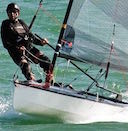
Joined: 07 Mar 11 Location: Hythe Online Status: Offline Posts: 6499 |
 Post Options Post Options
 Quote Quote  Reply Reply
 Posted: 29 Aug 18 at 4:25pm Posted: 29 Aug 18 at 4:25pm |
|
|
There's an old saying, where the head goes the body follows and until I once followed a really good lass in a Europe up a beat and then realised that there is no difference between the way I sail a board and the correct way to sail a dinghy, I didn't think it applied.
But whoever back there said about feel, that's the answer and even for someone like me who lives by feel, on sail craft, no tel tales, no little flag thing on top of the mast, it take a while to bed into a boat they are so much deader by comparison to real sailing on boards. But having said that, twist the upper half of your body and look upwind at the same time as loosening the grip on the wiggle thing and let the boat 'hunt' for you, works wonders. Providing of course you have a well set up boat that isn't all weather helm like my little sailing joy the Solution. The Alto was equally good as I imagine would be a 505, and surprisingly if you could stop it rocking and rolling that RS200 was nicely balanced and not bad at all upwind. Now my little Mini sprint will point like a demon - and then slip sideways because it has a crap centreboard, so you have to dig the rail of the boat in a bit to try and stop that. Neither did I rate the Blaze in light weather, always thought it was under foiled,now a Phantom.. just sit there and enjoy your pies, it does all the work. Moral of the tale, they are all different but You have to learn first so you can tell the difference and that's taken me the best part of ten years.. And now I've got a boat which if you point it you die (Farr 3.7)so you have to foot it off, sail under the damned Lasers, let some speed build then the foils do the work and if there's not enough wind to get on the wire - sail something else.  Edited by iGRF - 29 Aug 18 at 4:31pm |
||
 |
||
Post Reply 
|
Page 12> |
| Forum Jump | Forum Permissions  You cannot post new topics in this forum You cannot reply to topics in this forum You cannot delete your posts in this forum You cannot edit your posts in this forum You cannot create polls in this forum You cannot vote in polls in this forum |
Bulletin Board Software by Web Wiz Forums® version 9.665y
Copyright ©2001-2010 Web Wiz
Change your personal settings, or read our privacy policy
Copyright ©2001-2010 Web Wiz
Change your personal settings, or read our privacy policy












 Printable Version
Printable Version Delicious
Delicious Digg
Digg Facebook
Facebook Furl
Furl Google
Google MySpace
MySpace Newsvine
Newsvine reddit
reddit StumbleUpon
StumbleUpon Twitter
Twitter Windows Live
Windows Live Yahoo Bookmarks
Yahoo Bookmarks Topic Options
Topic Options